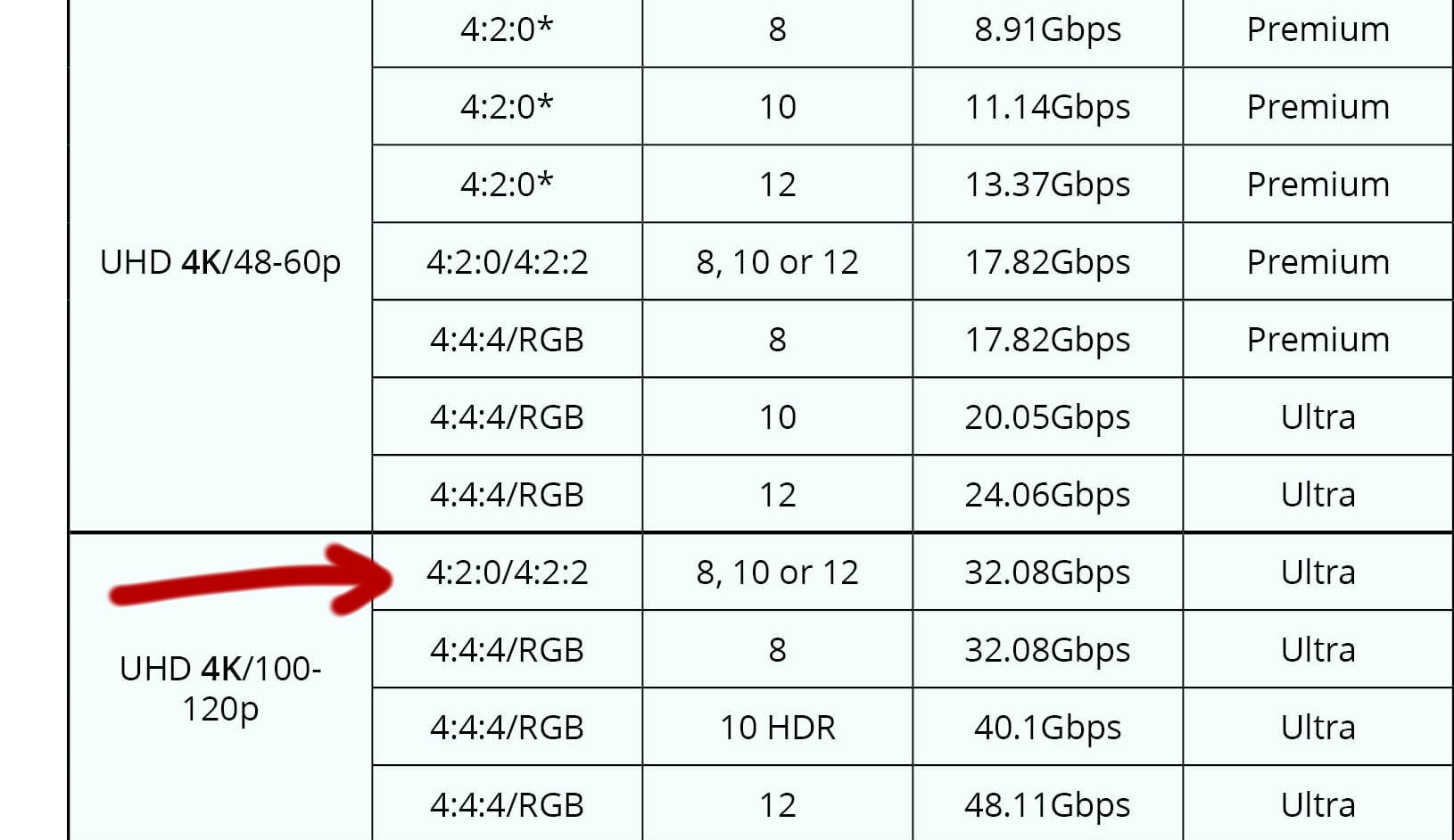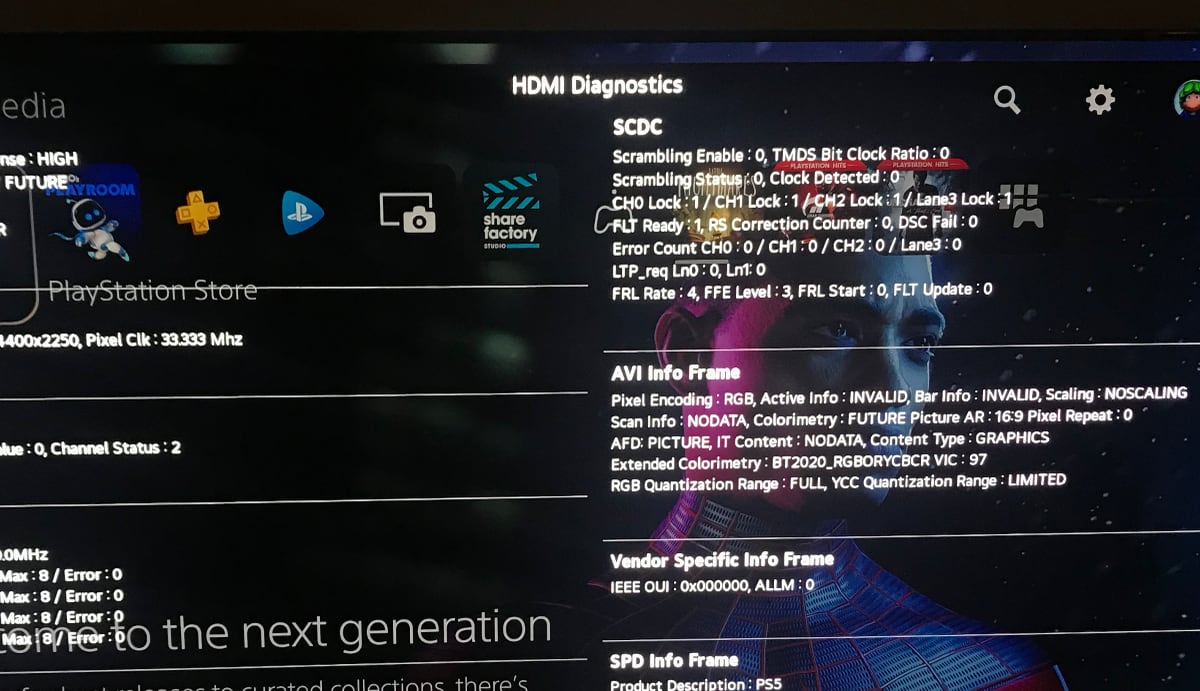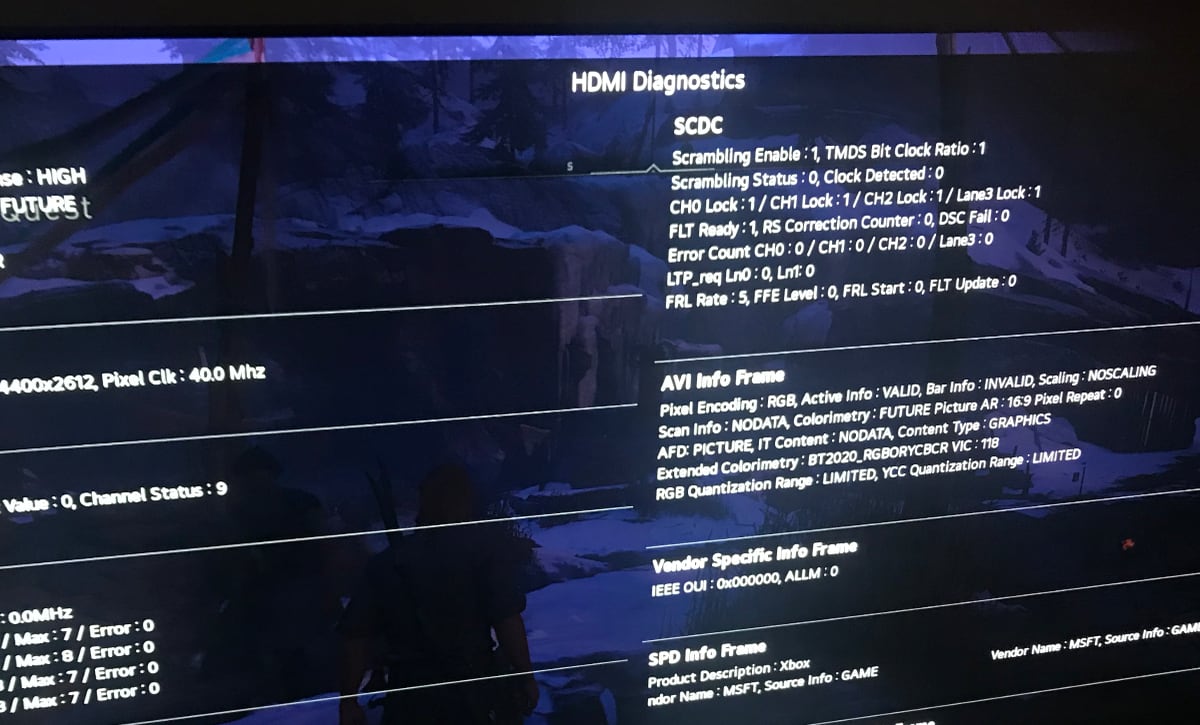Please, enough. HDMI 2.1 has been a delayed, confusing roll-out – a mess even – so understandably there is confusion. But unfortunately there is now so much misinformation out there that we need to address some of it.
Understanding HDMI 2.1
What is HDMI 2.1? It is the latest HDMI specification from the HDMI organization. Besides higher bandwidth, it offers features like eARC, VRR, and ALLM. Some features are optional – you may even see some of them on HDMI 2.0 chipsets.
However, you cannot conclude that "HDMI 2.1 support" in a given TV or player/console will give you all features. You must check each one individually.
- "HDMI Specification 2.1 is the most recent update of the HDMI specification and supports a range of higher video resolutions and refresh rates including 8K60 and 4K120, and resolutions up to 10K. Dynamic HDR formats are also supported, and bandwidth capability is increased up to 48Gbps," explains the HDMI organization (emphasis ours).
Now, some people have taken this to mean that HDMI 2.1 = 48Gbps. Anything less is, allegedly, not "full", "real", a "limitation" or whatever word has been used this year. Is that correct? It is not. It is perfectly normal for a system to scale according to its capabilities. If it did not, your products would generally be a lot more expensive. There is probably a good car analogy somewhere in here.
There was an uproar when it was confirmed that LG's 2020 OLED TVs were "limited" to 40 Gb/s over HDMI 2.1 rather than the 48 Gb/s for 2019 LG OLED TVs. Here, some pointed to Sony X900H/XH90's 48 Gb/s bandwidth as an advantage. As you may know today, LG 2020 OLED TVs are capable of processing an HDMI 2.1 signal (i.e. 4K120) from HDMI sink to screen without limitations. At this time, Sony XH90/X900H is not; a 4K120 video signal gets downgraded somewhere in the video chain, which ultimately affects picture details (or resolution).
Sony is working on a 'fix', but as you can see HDMI 2.1's bandwidth is no guarantee of anything. It cannot be used as a measure of quality. It does not guarantee that the 48Gb/s data carries through the video chain to the screen and your eyes. And if you believe LG 2019 OLED TVs are somehow more advanced video systems than the 2020 OLED models, you are mistaken – a subject for another time.
As you may know, FlatpanelsHD did not report on either the 40 Gb/s bandwidth in LG TVs, the 48 GB/s bandwidth in Sony X900H/XH90, or the HDMI 2.1 bandwidth in any other device for that matter. That was a deliberate, editorial choice. We own all the diagnostics tools, have access to all the relevant TVs, players, consoles and devices, and years of experience with all of it. As you finish the article, perhaps you will have a better understand of why we choose not to report on it.
Above examples are TV displays, i.e. end devices. The signal ends here and, if you are lucky enough, you get a picture. The capabilities of source/player and intermediate devices can be relevant too. A media player or a console with HDMI 2.1 such as PlayStation 5 or Xbox Series X will adjust its HDMI 2.1 output based on what the TV is telling it about its capabilities via the so-called E-EDID (Enhanced Extended Display Identification Data) system. What the player/console chooses to output ultimately depends on how it was designed – different devices do not necessarily make the same choices for HDMI 2.1 output.
Also read: List: 4K TVs and 8K TVs with HDMI 2.1
And then there are intermediate devices such as soundbars or receivers. These are neither source nor end devices. So for the HDMI element, it is important that these intermediate devices are more flexible. Source and end devices have components scaled to their overall capabilities, but intermediate devices should not set limitations; they must have enough HDMI bandwidth to let signals pass in unaltered form. That is why the first HDMI 2.1 receivers have been referred to as "defective" – let's see if it can be fixed. It is also one of the reasons why the new eARC feature of HDMI 2.1 encourages you to not let video signals pass through receivers or soundbars along the way; connect the player/console directly to the TV and return audio to receiver/soundbar via eARC.
FRL, bit depth & bandwidth
As illustrated by our LG 2020 OLED and Sony X900H/XH90 example, it is not a good idea to use HDMI 2.1 bandwidth as a guideline for capabilities, or video quality, in TVs.
Likewise, it not a good idea to use HDMI 2.1 bandwidth – or guesses as to what it is – as a guideline for the capabilities of the given player/console.
Let us introduce FRL, or Fixed Rate Link. While the acronym is not widely recognized, it is actually the foundation of HDMI 2.1. If you want to equate HDMI 2.1 to anything, equate it to FRL. It is what enables the much higher bandwidth in HDMI 2.1. FRL replaces TMDS (Transition-minimized differential signaling) that was the foundation under HDMI 2.0 and previous HDMI specifications.
- "FRL stands for Fixed Rate Link and it’s a signaling technology supported in the HDMI 2.1 Specification. FRL is necessary to achieve the higher uncompressed resolutions such as those above 4k60 as well as the ultra high speed bandwidths up to 48Gbps. It’s also required for compressed video transport which in turn enables operation at lower data rates for example 4k60 and ultra-high pixel rate video such as 10Kp120," explains the HDMI organization and continues: "It replaces TMDS. Note that the HDMI 2.1 specification still requires support for TMDS for backwards compatibility and still seamlessly supports the billions of HDMI devices that utilize TMDS."
Like many other video systems, HDMI operates in "modes" and with FRL it has new fixed rate modes that can contain more than just one variation of bit depth and chroma subsampling.
Digging into bit depth, chroma subsampling and HDMI timing/signalling is far beyond the scope of this article, and you do not even have to understand any of it. What is important here is that you understand that HDMI operates in modes.
Out in the wild, we are now seeing attempts to evaluate the capabilities of a source device/console based on the HDMI 2.1 output that it sets, even rating devices based on this exercise. Most prominently with PlayStation 5 and Xbox Series X, which are the first two consoles with HDMI 2.1.
Futile.
Some are suggesting that Xbox Series X has more capable HDMI 2.1 hardware due to its output mode with 40Gb/s compared to the PS5's output mode with 32 Gb/s. Or that PS5 is a 12-bit system with 12-bit output.
Here is the thing: In some HDMI modes, HDMI signaling diagnostics tools such as passthrough devices or tools built into TVs cannot determine the bit depth (8, 10 or 12-bit) or chroma subsampling (4:2:0 or 4:2:2). You cannot deduce these parameters based on the bandwidth either. It is a fixed rate link, remember? Only the source would know what bit-depth / chroma is actually sent under this HDMI mode. One HDMI diagnostics tool would tell you 8-bit, another would tell you 10-bit, and another yet would tell you 12-bit. Just random guesses, and not even educated guesses.
Other parameters such as resolution and frequency can of course be determined (the timing signal). And in other HDMI modes, the bit-depth can be deduced when the mode has only one option. See the chart below.

An example of an HDMI mode that can be 8, 10 or 12-bit, and 4:2:0 or 4:2:2. The HDMI diagnostics tool can only guess. Chart: HDMI organization
Wrap-up
So, let us try and wrap up with an example. A given TV would signal its capabilities to PlayStation 5 or Xbox Series via the E-EDID, which is standardized (why the console can automatically detect your TV's capabilities and switch its output accordingly). The console would then select a specific HDMI mode based on how it was designed.
PS5 and XSX would not necessarily select the same HDMI mode even for the same TV – and typically do not, in fact. With one of our HDMI 2.1 capable TVs, PS5 currently set its default mode to HDMI 2.1 FRL rate 4, whereas Xbox Series X currently sets it to HDMI 2.1 FRL rate 5. But that is not definitive and it does not tell us much. It certainly does not tell us exactly what the consoles are capable of.

Example of PlayStation 5's HDMI 2.1 output

Example of Xbox Series X's HDMI 2.1 output
There are many design choices involved here that would need deeper examination. And future firmware updates – which for example PS5 will get to enable 8K output as well as VRR, and Xbox Series X will get to enable 8K output – could change things.
So please. Do not jump to conclusions. And do not use HDMI 2.1 bandwidth as an indicator of hardware capabilities or picture quality.
FlatpanelsHD will explore various technical aspects of both Xbox Series X and PlayStation 5 in our upcoming in-depth reviews.